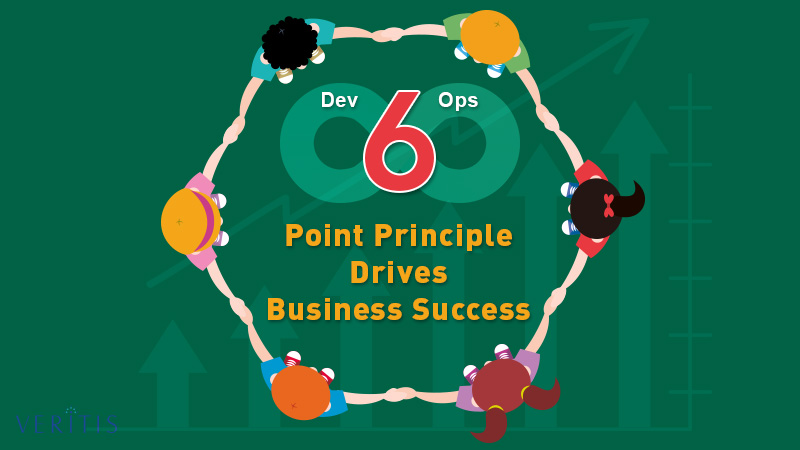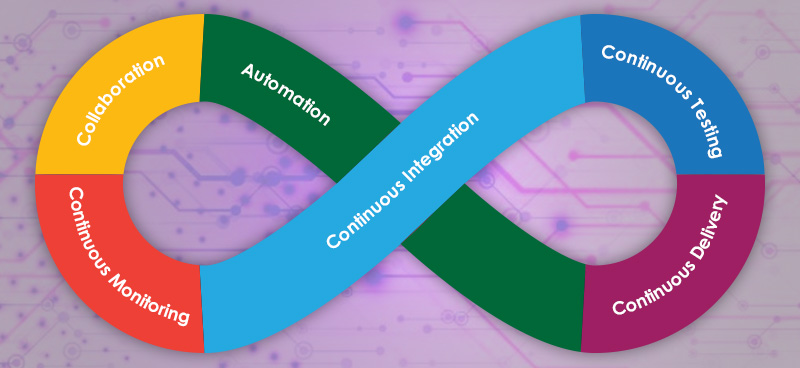
In this digital era, the ability to deliver value quickly, reliably, and at scale is not only essential but a necessity. This is where DevOps capabilities play a crucial role. More than just a collection of technical tools, DevOps signifies a strategic shift in how businesses develop, release, and manage applications.
While many organizations still pursue rigid maturity models, true leaders are not just embracing a capability based DevOps strategy but also inspiring us with their adaptability that evolves in tandem with their goals, systems, and customer needs.
In this blog, we go beyond the surface to explore the key principles of DevOps, its underlying capabilities, and how they directly tie to business outcomes. Whether you’re defining your DevOps objectives, refining your roadmap, or seeking measurable value, this guide will help you:
- Understand the key purpose of DevOps from a capability standpoint
- Map critical DevOps goals and objectives to real performance metrics
- Build a tailored, scalable DevOps framework suited to your enterprise
Let’s break down what makes DevOps not just a practice but a competitive advantage.
Connect with Our DevOps Expert
Why DevOps Capabilities Outrank Traditional Maturity Models
DevOps success isn’t about climbing a linear maturity ladder; it’s about building the correct set of capabilities tailored to your business goals.
High-performing organizations today follow a capability based approach (as championed by DORA and Octopus Deploy), where success stems from mastering specific practices, not just ticking off maturity checkpoints.
Instead of focusing on fixed tiers, teams emphasize capabilities across these five core domains:
- Continuous Integration and Delivery
- Architectural Modularity and Decoupling
- Automated and Adaptive Processes
- Lean Flow, Monitoring, and Feedback Loops
- Collaborative and Generative Culture
This flexible model encourages businesses to prioritize and scale capabilities based on outcomes, such as deployment frequency, change lead time, and recovery speed, rather than adhering to a one size fits framework.
Useful Link: Measuring DevOps Success in 4 Ways!
6 Core DevOps Principles That Drive Real Business Impact
In today’s fast-paced digital world, where slow releases, isolated teams, and quality issues are no longer acceptable, DevOps plays a crucial role. It’s not just a buzzword; it’s a strategic approach that unites development and operations, streamlines delivery, and enhances business agility.
At the heart of DevOps lie six core principles, each of which is crucial in helping organizations deliver better software faster, safer, and more reliably.
1) Collaboration
We’ve come a long way since the development and operations teams worked independently to produce an application. This process had the potential to be bettered. DevOps capabilities erase the company’s internal boundaries and bind both teams. It encompasses everyone involved in application development, QA, and delivery.
2) Automation
DevOps is deeply reliant on automation, for which you need tools—not one, two, or three but an entire toolchain—to automate and connect the disparate teams and the other people involved in the process.
3) Continuous Integration
The CI concept exemplifies the agile nature of the DevOps process. CI provides room for continuous testing and fixing through immediate feedback. This dev and ops collaboration ensures that everyone remains on the same page, as it is transparent about how and who introduced the changes in the software.
4) Continuous Testing
Earlier, testing was restricted to the concerned team, but now everyone is called to action. When development experts pass the correct code to testing teams, they also provide them with test data sets that help these test engineers be on the same page as the production environment.
5) Continuous Delivery
Continuous delivery is an extension of continuous integration, except that the latter never surpasses the DevOps testing lab. Continuous delivery results in individual releases being less complicated and delivered much more frequently. Some software developers take the risk of carting developer codes to the end-users and depend on their feedback to monitor real-time performance and minimize any glitches.
6) Continuous Monitoring
There is no way to ensure a step-by-step DevOps capability process; its very nature demands that the different elements talk to each other across the development framework. So, how do you deal with failures? You find them and fix them immediately. That is what continuous monitoring is about. The advantage that entails is that the same tools used for monitoring can be used to identify problems before they reach production.
These are the characteristics that present DevOps as the ultimate solution for creating innovative and user-friendly applications. When applied, this DevOps consulting services approach can transform your processes and workflow. This DevOps Before and After Scenario will help you understand how the six main capabilities and many similar others, facilitated by DevOps consulting services, work to give you a positive DevOps experience.
Useful Link: How DevOps Helps Businesses in Addressing Technical Debt?
DevOps Capability Clusters and Their Business Impact
To demonstrate real value, it’s crucial to connect DevOps objectives with measurable business performance. Below is a table mapping key capability clusters to outcomes that matter most:
| Capability Cluster | Sample Capabilities | Business Metric Impacted |
| Continuous Delivery and Automation | CI/CD pipelines, trunk-based development | Deployment Frequency |
| Architecture and Decoupling | Microservices, loosely coupled components | Change Lead Time |
| Cultural Practices and Learning | Generative culture, blameless retrospectives | Mean Time to Recovery (MTTR) |
| Lean Flow and Monitoring | Real-time feedback loops, flow visibility | Change Failure Rate, Customer Reliability |
A Roadmap to DevOps Capability Adoption
Adopting and scaling DevOps successfully hinges on a meticulously crafted roadmap. This tailored approach is not about quick wins but about fostering long-term capability growth.
Step 1: Assess Gaps
Start by evaluating your current performance using DORA metrics, such as lead time, deployment frequency, and MTTR, to understand your capability baseline.
Step 2: Prioritize Capabilities
When selecting capability areas, it’s crucial to align them directly with your key business objectives. The key here is not to implement everything, but to focus on what truly makes a difference.
Step 3: Pilot and Iterate
Implement selected capabilities in focused teams, using Agile principles and platform engineering to validate effectiveness.
Step 4: Scale Strategically
Scale successful practices across the organization using shared platforms, reusable pipelines, and standardized templates.
Step 5: Embed Culture as a Core Capability
Research shows that generative cultures where teams emphasize learning, psychological safety, and collaboration drive superior DevOps outcomes. Treat culture as a foundational DevOps capability alongside tools and processes.
Enable your teams with mechanisms like:
- Team-level DORA dashboards
- Capability planning workshops
- Cross-functional learning sessions
This roadmap transcends generic maturity models, providing a sustainable, performance-driven approach to DevOps.
Case in Point: DevOps for IT Infra and Cloud Migration
A successful demonstration of DevOps capabilities in action is evident from our engagement with a prominent client in the electronics industry. The project involved modernizing IT infrastructure and facilitating a seamless migration from VMs to the cloud, underscoring how DevOps principles drive operational efficiency and business success.
Read the full case study here: Implementing DevOps for IT Infra and VM to Cloud Migration in Electronics Industry
Conclusion
DevOps is a very productive approach that has dramatically benefitted companies. Although most assume that DevOps is footloose, it is well-founded on these principles. However, transitioning from the traditional production approach is rather challenging. This is where Veritis steps in and gets the job done.
Key Takeaways
- DevOps is flexible, but it is well-founded on principles
- DevOps collaboration is unparalleled
- Continuous integration betters the software solution
- Veritis has tailored DevOps services and solutions to various clients
